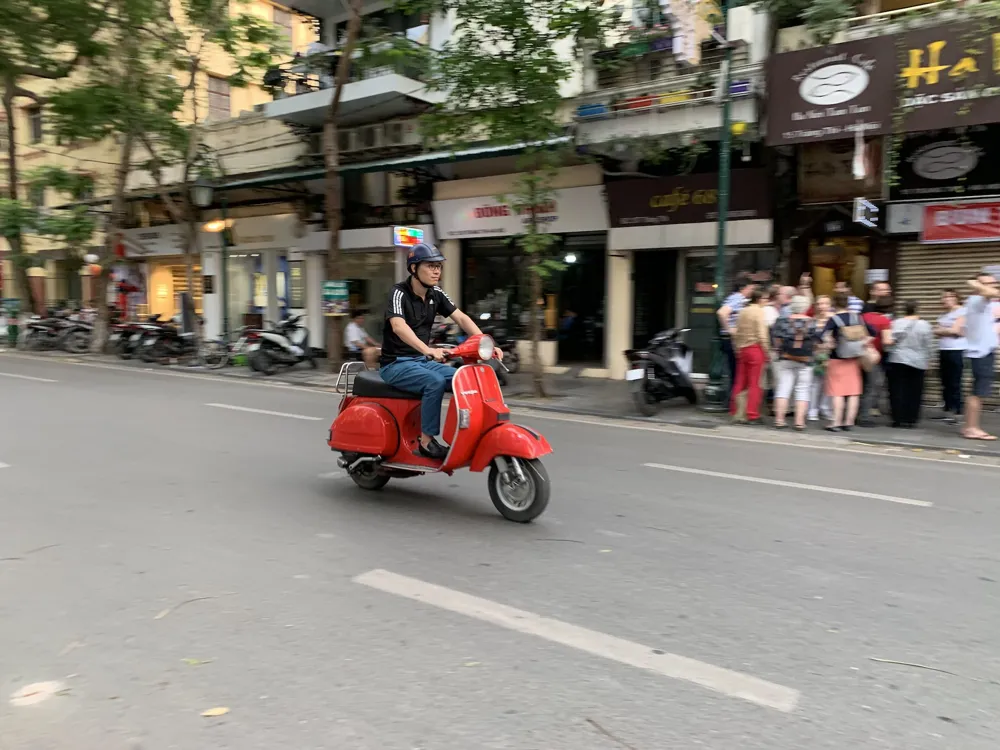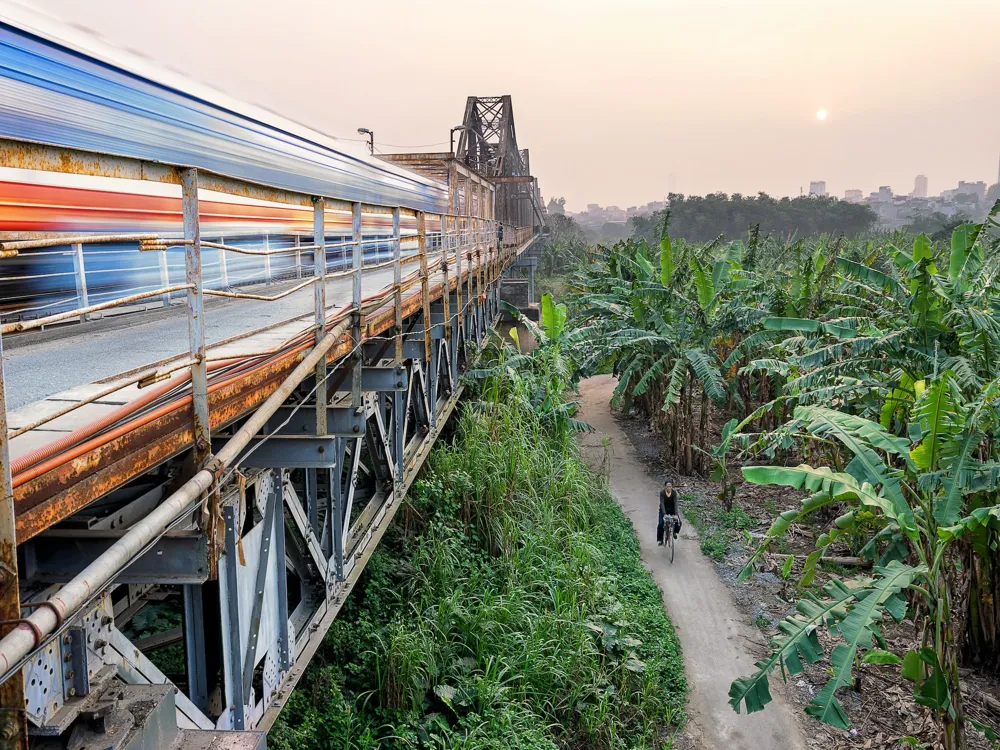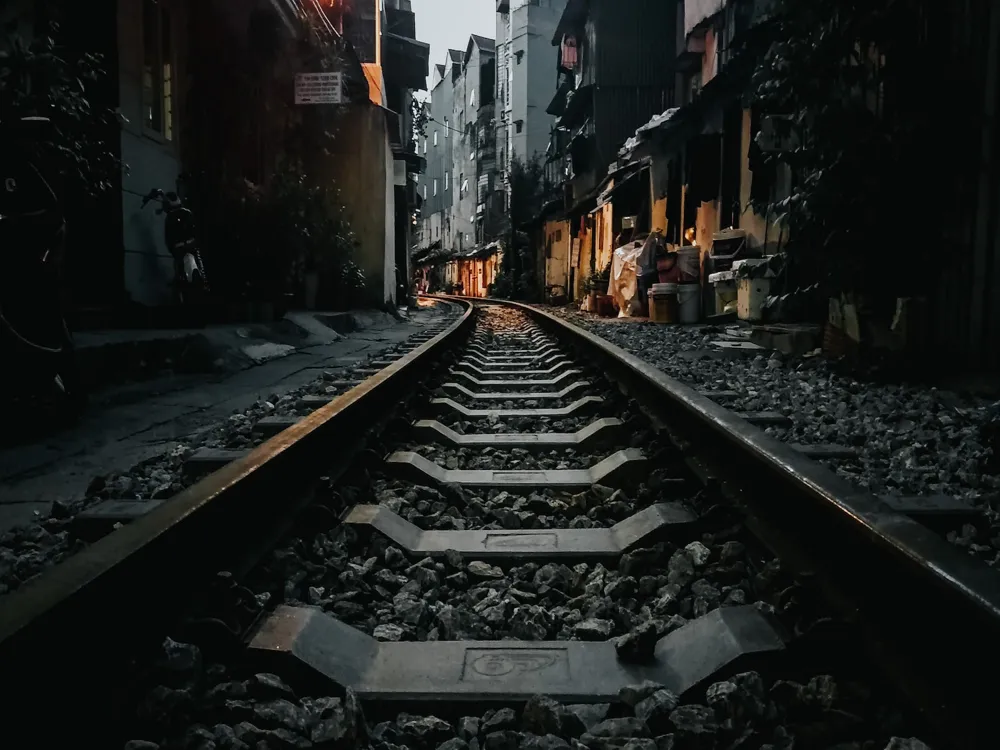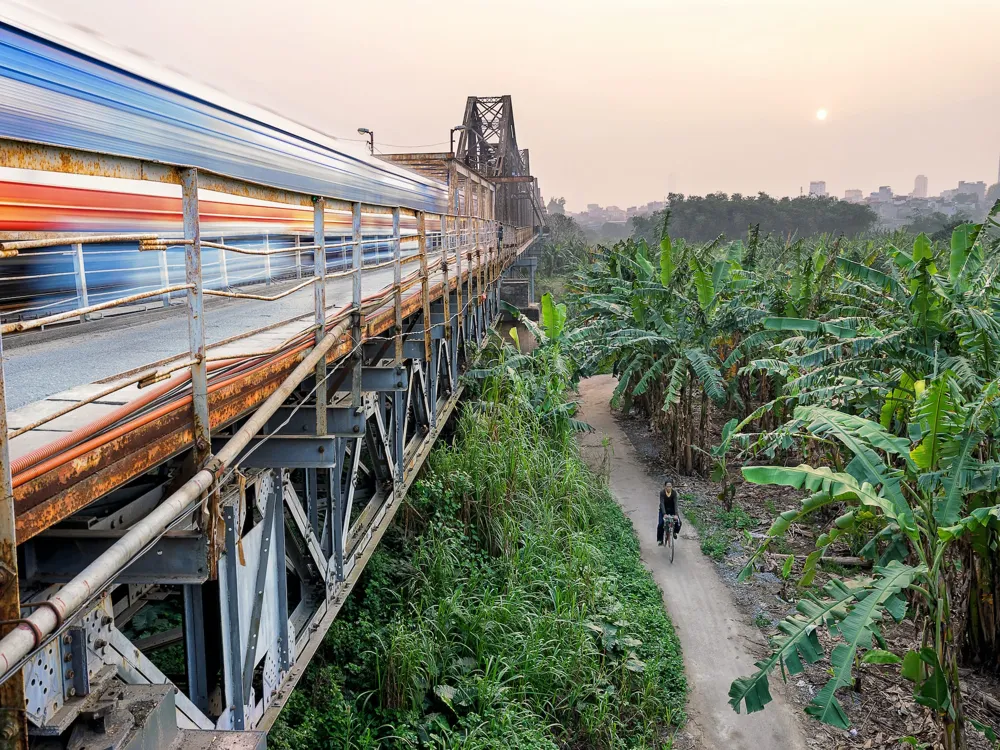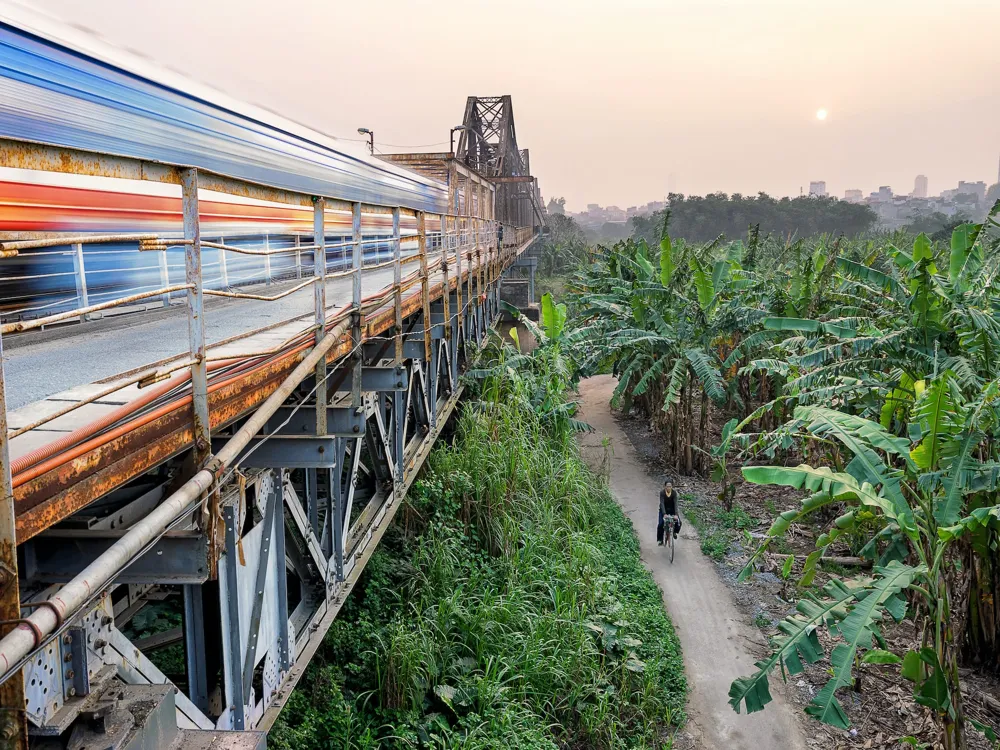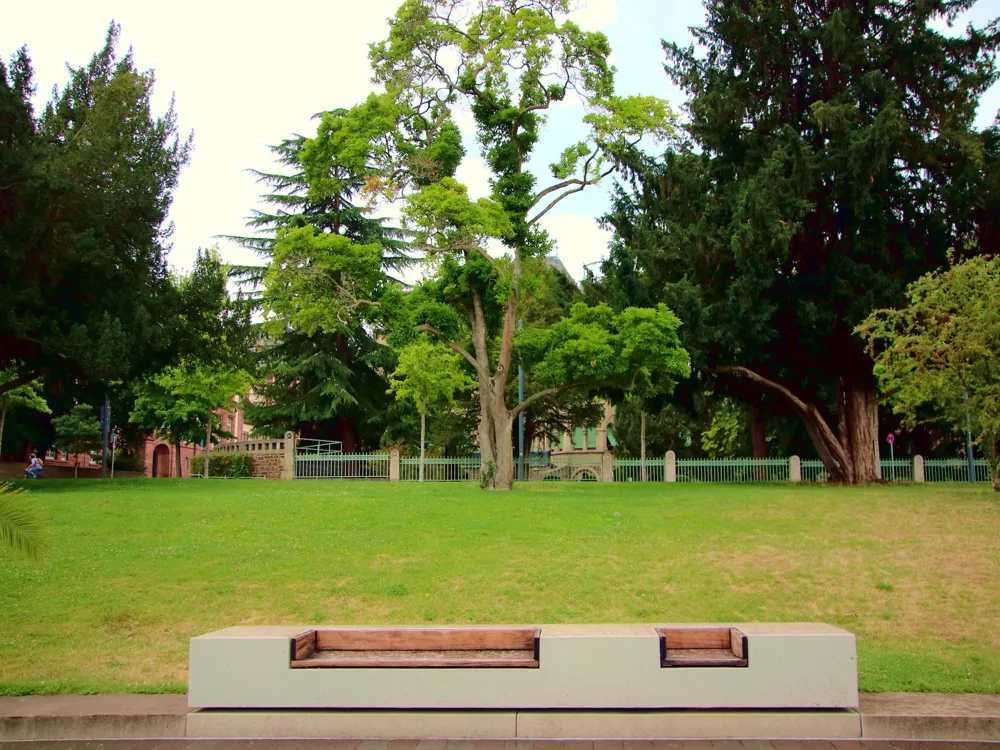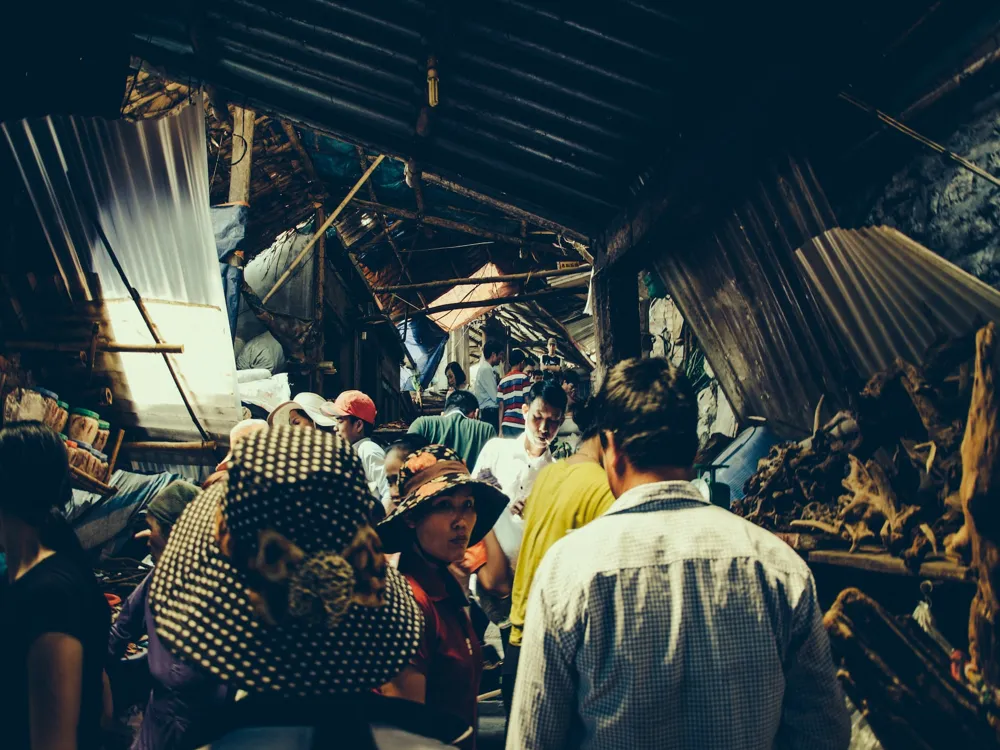Hanoi, the capital city of Vietnam, is a mesmerizing blend of Eastern and Western cultures, deeply flavored by its colonial history and vibrant modern-day life. With over a thousand years of history, Hanoi is a living tapestry of ancient architecture, bustling streets, tranquil parks, and a dynamic population. The city's heart is the Old Quarter, where narrow streets are lined with French colonial buildings, Buddhist temples, and markets. Hanoi is not just the political heart of Vietnam but also a cultural and historical center. The city's history dates back to 1010 when King Ly Thai To moved the capital from Hoa Lu to Hanoi. This rich history is reflected in its architecture, cuisine, and customs. The city's landscape is marked by lakes, shaded boulevards, verdant public parks, and open spaces, which provide a refreshing respite from the city's more frenetic streets. Hanoi is also known for its cuisine, which is a delectable mix of Vietnamese, French, and Chinese influences, offering an array of flavors to satisfy any palate. As a city that constantly evolves, Hanoi embraces change while fiercely maintaining its cultural heritage, making it a fascinating place to explore. From its historic temples and museums to its thriving arts and culinary scenes, Hanoi offers a journey through the past, present, and future of Vietnam. Hanoi's history is a compelling chronicle of resilience and adaptation. Over the centuries, it has faced numerous invasions, each leaving an indelible imprint on the city's character. The city has been the seat of power for several Vietnamese dynasties, each contributing to its architectural and cultural landscape. The Temple of Literature, for instance, is a remarkable example of traditional Vietnamese architecture and is home to the country's first national university. During the French colonial period, Hanoi underwent significant transformations, with the introduction of European architectural styles, modern infrastructure, and urban planning. This period left a lasting architectural legacy, evident in the grand French-style villas and buildings that line the city's boulevards. The coexistence of these diverse architectural styles is a testament to Hanoi's complex history and cultural richness. Hanoi is a melting pot of different cultures and traditions. The city celebrates numerous festivals throughout the year, including the Lunar New Year (Tet), the Mid-Autumn Festival, and many others, each reflecting the rich tapestry of Vietnamese culture. Traditional Vietnamese arts like water puppetry, calligraphy, and folk music are still practiced and cherished in Hanoi. The city's diverse population includes ethnic Vietnamese, Chinese, and other minority groups, each contributing to Hanoi's vibrant cultural scene. This diversity is also reflected in the city's culinary offerings, which range from street food stalls serving traditional Vietnamese dishes to upscale restaurants offering international cuisine. In recent years, Hanoi has undergone rapid modernization, with the development of new urban areas, commercial centers, and infrastructure. However, the city has managed to balance modernity with tradition, ensuring that its historical and cultural heritage is preserved. The city's skyline is a mix of old and new, with ancient pagodas standing alongside modern skyscrapers. Technology and innovation are also playing an increasingly important role in Hanoi's development. The city is home to a growing number of startups and tech companies, contributing to its status as an emerging hub for innovation in Southeast Asia. Hanoi is also focusing on sustainable development and environmental conservation. Efforts are being made to preserve green spaces, reduce pollution, and promote eco-friendly practices. The city's lakes, such as Hoan Kiem Lake, are not only scenic spots but also play a crucial role in the city's environmental health. With its rich history, cultural diversity, and commitment to sustainable development, Hanoi offers a unique and captivating experience for visitors and residents alike. It is a city where the past and future converge, creating a dynamic and exciting environment. Hanoi's architecture is a captivating tapestry that narrates the story of the city's past and present. The cityscape is a harmonious blend of traditional Vietnamese styles, French colonial influences, and modern architectural elements. This diverse architectural heritage makes Hanoi a living museum, showcasing the influences of different cultures and eras. The traditional Vietnamese architecture in Hanoi is characterized by its harmony with nature, often incorporating elements like courtyards, gardens, and water features. Temples and pagodas, with their curved rooflines and intricate woodwork, exemplify the beauty and spirituality of ancient Vietnamese architecture. The Temple of Literature and the One Pillar Pagoda are prime examples of this style. The French colonial era left a significant mark on Hanoi's architecture. The wide boulevards, grand villas, and public buildings from this period reflect a distinct European style, adapted to the local climate and materials. The Hanoi Opera House and St. Joseph's Cathedral are notable examples of French architectural influence. These buildings not only represent a historical period but also add a unique charm to the city's aesthetics. In recent decades, Hanoi has embraced contemporary architectural styles, with an emphasis on modernity and functionality. The city's skyline is increasingly dotted with high-rise buildings, shopping malls, and contemporary art spaces. However, this modernization is done with a conscious effort to preserve the city's historical identity and cultural integrity. One of the key challenges in Hanoi's architectural landscape is the conservation of historic buildings and the adaptation of these spaces to meet contemporary needs. Efforts are being made to protect and restore heritage buildings, ensuring they remain integral parts of the city's fabric. Adaptive reuse of colonial buildings into museums, hotels, and restaurants is a common practice, offering a glimpse into the city's past while serving modern functions. Another significant aspect of Hanoi's architecture is its integration with nature. Traditional Vietnamese architecture has always emphasized a close relationship with the natural environment. This philosophy continues to influence modern architectural practices, with a focus on creating green spaces, utilizing natural light, and incorporating elements like plants and water in building designs. In recent years, Hanoi has seen a surge in innovative architectural trends, blending traditional elements with modern design. This includes the use of sustainable materials, green building techniques, and innovative designs that reflect both the city's heritage and its future aspirations. These trends are setting Hanoi apart as a city that respects its past while boldly moving towards the future. Overall, the architecture of Hanoi is a reflection of its rich history, cultural diversity, and forward-looking spirit. It offers a unique window into the soul of the city, telling stories of conquests, colonizations, revolutions, and rebirths. It's a city where every building, street, and alleyway has a story to tell, making it an endlessly fascinating destination for architecture enthusiasts and casual visitors alike. The best time to visit Hanoi is during the spring (February to April) and autumn (September to November) when the weather is pleasant with milder temperatures and less rainfall. Summer in Hanoi can be hot and humid, while winter months are cooler and can be foggy. Hanoi has a range of transport options including buses, taxis, and the recently introduced metro system. However, one of the most authentic ways to explore Hanoi is by motorbike or bicycle, which allows you to navigate the narrow streets of the Old Quarter and other historic areas easily. Remember to always negotiate taxi fares before the trip or use reputable taxi companies with meters. Respecting local customs and traditions is important. Dress modestly when visiting temples and pagodas. It’s also customary to remove your shoes before entering someone's home or a place of worship. Bargaining is common in markets, but do it respectfully. Greeting older people first shows respect in Vietnamese culture. Hanoi is famous for its street food, and trying local dishes is a must. However, eat at busy stalls with good turnover to ensure freshness. Drink bottled water and be cautious with ice. It's also advisable to carry a basic first aid kit for minor ailments. While English is increasingly common in tourist areas, learning a few basic Vietnamese phrases can enhance your experience. Simple phrases like 'Xin chào' (Hello) and 'Cảm ơn' (Thank you) can go a long way in showing respect and appreciation for the local culture. Hanoi is well-connected by air, road, and rail, making it easily accessible from different parts of the world. The Noi Bai International Airport, located about 35 kilometers from the city center, is the main gateway for international travelers. The airport is well-served by major airlines from across the globe, offering direct and connecting flights to Hanoi. For those traveling within Vietnam or from neighboring countries, Hanoi is well-connected by road and rail. The city's central railway station, Hanoi Railway Station, is a hub for trains coming from all over the country, including the famous Reunification Express which runs from Ho Chi Minh City to Hanoi. Long-distance buses also connect Hanoi with major Vietnamese cities and regions. Upon arrival, visitors can choose from various transportation options to reach the city center, including taxis, buses, and the recently launched airport express train. It's recommended to use official transportation services to avoid overcharging. Overall, reaching Hanoi is straightforward, thanks to its well-developed transport infrastructure. Once in the city, visitors can immerse themselves in the rich tapestry of culture, history, and vibrant city life that Hanoi has to offer.Overview of Hanoi
Historical Significance
Cultural Diversity
Modern Developments
Environmental Consciousness
Architecture of Hanoi
Conservation and Adaptation
Integration with Nature
Innovative Trends
Tips When Visiting Hanoi
Best Time to Visit
Getting Around the City
Local Etiquette and Customs
Food and Safety
Language Tips
How To Reach Hanoi
Ba Vi National Park
Hanoi
₹ 15,260 onwards
View hanoi Packages
Weather :
Tags : National Park
Timings : 5:00 AM - 9:00 PM
Time Required : 1 - 2 days
Entry Fee : Entry Fee: VND 15,000 (Vehicle charges extra)
Planning a Trip? Ask Your Question
Hanoi Travel Packages
View All Packages For Hanoi
Top Hotel Collections for Hanoi

Private Pool

Luxury Hotels

5-Star Hotels

Pet Friendly
Top Hotels Near Hanoi
Other Top Ranking Places In Hanoi
View All Places To Visit In hanoi
View hanoi Packages
Weather :
Tags : National Park
Timings : 5:00 AM - 9:00 PM
Time Required : 1 - 2 days
Entry Fee : Entry Fee: VND 15,000 (Vehicle charges extra)
Planning a Trip? Ask Your Question
Hanoi Travel Packages
View All Packages For Hanoi
Top Hotel Collections for Hanoi

Private Pool

Luxury Hotels

5-Star Hotels

Pet Friendly







